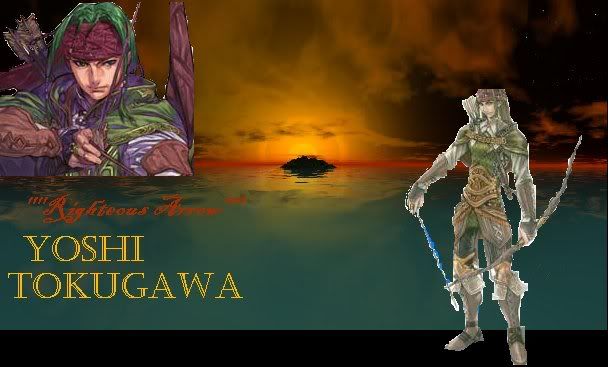Post by Yoshi Tokugawa on Mar 11, 2009 9:22:23 GMT -4
History: Sirens
_________
In Greek mythology, the Sirens (Greek singular: Σειρήν Seirēn; Greek plural: Σειρνες Seirēnes) were three dangerous bird-women, portrayed as seductresses, who lived on an island called Sirenum scopuli. In some later, rationalized traditions the literal geography of the "flowery" island of Anthemoessa, or Anthemusa, is fixed: sometimes on Cape Pelorum and at others in the Sirenusian islands near Paestum or in Capreae. All locations were surrounded by cliffs and rocks. Sailors who sailed near were compelled by the Sirens' enchanting music and voices to shipwreck on the rocky coast. Although they lured mariners, the sirens were not sea deities.
When the Sirens were given a parentage they were considered the daughters of the river god Achelous, fathered upon Terpsichore, Melpomene, Sterope, or Chthon, the Earth, in Euripides' Helen 167, where Helen in her anguish calls upon "Winged maidens, virgins, daughters of the Earth". Roman writers linked the Sirens more closely to the sea, as daughters of Phorcys. Homer says nothing of their origin or names, but gives the number of the Sirens as two [Odyssey, 12:52]. Later writers mention both their names and number; some state that there were three, Peisinoe, Aglaope, and Thelxiepeia (Tzetzes, ad Lycophron 7l2) or Parthenope, Ligeia, and Leucosia (Eustathius, loc. cit.; Strabo v. §246, 252 ; Servius' commentary on Virgil's Georgics iv. 562). Eustathius (Commentaries §1709) states that they were two, Aglaopheme and Thelxiepeia. Their number is variously reported[citation needed] as between two and five, and their individual names as Thelxiepeia/Thelxiope/Thelxinoe, Molpe, Aglaophonos/Aglaope/Aglaopheme, Pisinoe/Peisinoë/Peisithoe, Parthenope, Ligeia, Leucosia, Raidne, and Teles.
The sirens of Greek mythology are sometimes portrayed in later folklore as mermaid-like; in fact, some languages use the same word for both bird and fish creatures, such as the Maltese word 'sirena'. Other related types of mythical or legendary creature are water fairies (e.g. various water nymphs)
History: Harpies
__________________
In Greek mythology, a harpy ("snatcher", from Latin: harpia, Greek: ρπυια, harpūia) was any one of the mainly winged death-spirits best known for constantly stealing all food from Phineas. The literal meaning of the word seems to be "that which snatches" as it comes from the ancient Greek word harpazein (ἅρπάξειν), which means "to snatch".
The harpy could also bring life. A harpy was the mother by the West Wind Zephyros of the horses of Achilles (Iliad xvi. 150). In this context Jane Harrison adduced the notion in Virgil's Georgics that mares became gravid by the wind alone, marvelous to say (iii.274).
Though Hesiod (Theogony) calls them two "lovely-haired" creatures, harpies as beautiful winged bird-women are a late development, in parallel with the transformation of the siren, a "creature malign though seductive in Homer, but gradually softened by the Athenian imagination into a sorrowful death angel".On a vase in the Berlin Museum, a harpy has a small figure of a hero in each claw, but her head is recognizably a Gorgon, with goggling eyes, protruding tongue, and tusks.
Kiseki Translation:
______________________________________-
The Harpies would be a race like any other in the Mythical realm. They would take the form of Sirens, as women with Birdlike Wings, maybe some with other bird like features, like talons or feathers. In addition, Harpies can communicate with other bird-like creatures and Screech at a hypersonic level. I'm not sure if the Harpies would have a kingdom or nobility within the Mythical Realm, but that would be nice . Harpy Children are born from Harpie eggs, Very Small at birth, They grow at a rapid rate from Hatchlings.
Harpies have other innate abilites too, such as flight, a strong sense of sight and smell, and above human reaction time. Other than that, they are no stronger that any human or sub-human species.
_________
In Greek mythology, the Sirens (Greek singular: Σειρήν Seirēn; Greek plural: Σειρνες Seirēnes) were three dangerous bird-women, portrayed as seductresses, who lived on an island called Sirenum scopuli. In some later, rationalized traditions the literal geography of the "flowery" island of Anthemoessa, or Anthemusa, is fixed: sometimes on Cape Pelorum and at others in the Sirenusian islands near Paestum or in Capreae. All locations were surrounded by cliffs and rocks. Sailors who sailed near were compelled by the Sirens' enchanting music and voices to shipwreck on the rocky coast. Although they lured mariners, the sirens were not sea deities.
When the Sirens were given a parentage they were considered the daughters of the river god Achelous, fathered upon Terpsichore, Melpomene, Sterope, or Chthon, the Earth, in Euripides' Helen 167, where Helen in her anguish calls upon "Winged maidens, virgins, daughters of the Earth". Roman writers linked the Sirens more closely to the sea, as daughters of Phorcys. Homer says nothing of their origin or names, but gives the number of the Sirens as two [Odyssey, 12:52]. Later writers mention both their names and number; some state that there were three, Peisinoe, Aglaope, and Thelxiepeia (Tzetzes, ad Lycophron 7l2) or Parthenope, Ligeia, and Leucosia (Eustathius, loc. cit.; Strabo v. §246, 252 ; Servius' commentary on Virgil's Georgics iv. 562). Eustathius (Commentaries §1709) states that they were two, Aglaopheme and Thelxiepeia. Their number is variously reported[citation needed] as between two and five, and their individual names as Thelxiepeia/Thelxiope/Thelxinoe, Molpe, Aglaophonos/Aglaope/Aglaopheme, Pisinoe/Peisinoë/Peisithoe, Parthenope, Ligeia, Leucosia, Raidne, and Teles.
The sirens of Greek mythology are sometimes portrayed in later folklore as mermaid-like; in fact, some languages use the same word for both bird and fish creatures, such as the Maltese word 'sirena'. Other related types of mythical or legendary creature are water fairies (e.g. various water nymphs)
History: Harpies
__________________
In Greek mythology, a harpy ("snatcher", from Latin: harpia, Greek: ρπυια, harpūia) was any one of the mainly winged death-spirits best known for constantly stealing all food from Phineas. The literal meaning of the word seems to be "that which snatches" as it comes from the ancient Greek word harpazein (ἅρπάξειν), which means "to snatch".
The harpy could also bring life. A harpy was the mother by the West Wind Zephyros of the horses of Achilles (Iliad xvi. 150). In this context Jane Harrison adduced the notion in Virgil's Georgics that mares became gravid by the wind alone, marvelous to say (iii.274).
Though Hesiod (Theogony) calls them two "lovely-haired" creatures, harpies as beautiful winged bird-women are a late development, in parallel with the transformation of the siren, a "creature malign though seductive in Homer, but gradually softened by the Athenian imagination into a sorrowful death angel".On a vase in the Berlin Museum, a harpy has a small figure of a hero in each claw, but her head is recognizably a Gorgon, with goggling eyes, protruding tongue, and tusks.
Kiseki Translation:
______________________________________-
The Harpies would be a race like any other in the Mythical realm. They would take the form of Sirens, as women with Birdlike Wings, maybe some with other bird like features, like talons or feathers. In addition, Harpies can communicate with other bird-like creatures and Screech at a hypersonic level. I'm not sure if the Harpies would have a kingdom or nobility within the Mythical Realm, but that would be nice . Harpy Children are born from Harpie eggs, Very Small at birth, They grow at a rapid rate from Hatchlings.
Harpies have other innate abilites too, such as flight, a strong sense of sight and smell, and above human reaction time. Other than that, they are no stronger that any human or sub-human species.







